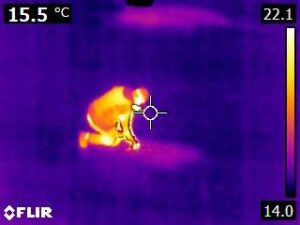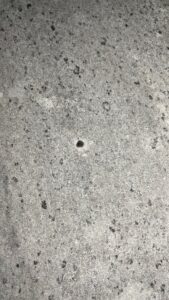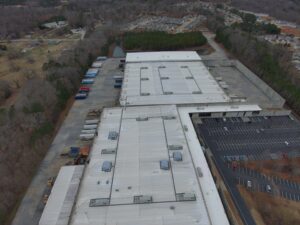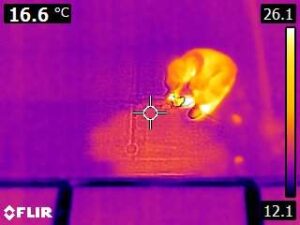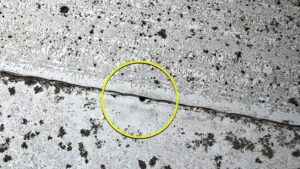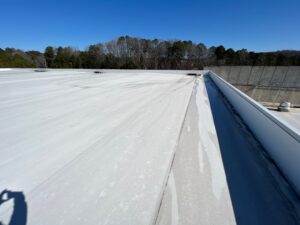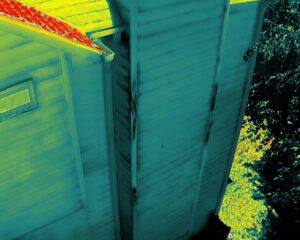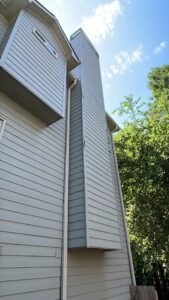How Thermal Inspections Pinpoint Hard-to-Find Leaks on Commercial Roofs
Imagine the peace of mind of knowing that your commercial membrane roof is in optimal condition, free from hard-to-find leaks, and maximizing energy efficiency. In the ever-evolving world of technology, thermal roof inspection has become an invaluable tool to make this vision a reality. In this blog post, you’ll discover the benefits of thermal roof inspections, how thermal imaging technology works, the process involved in a thermal roof inspection, and how to choose the exemplary service for your needs.
Article Highlights
- Thermal roof inspections offer a variety of benefits, such as increased energy efficiency and cost savings.
- Imaging technology using thermal provides reliable and precise detection of moisture issues to help protect commercial and residential roofs
- Thermal roof inspection service can be a great investment in the long-term health of your roof.
Unlocking the Power of Thermal Roof Inspections
Early Detection for Lasting Protection
Spotting Moisture Issues with Thermal Roof Inspections Detecting moisture issues in roofs early on is vital to preventing further damage and minimizing repair costs. Learn how thermal imaging technology is crucial in swiftly and efficiently identifying hidden moisture problems, even in hard-to-reach areas. Discover the benefits of early detection and how temperature differences can help pinpoint potential issues.
Cost-Effective Repairs
Maximizing Savings and Extending Roof Life with Thermal Roof Inspections Roof repairs can be financially burdensome when issues escalate due to delayed detection. Uncover how thermal roof inspections offer cost-effective solutions that protect against water damage, enhance the energy efficiency, and extend the life of your roof. Explore the benefits of accurately identifying problem areas and performing timely repairs, saving you from the high costs of total roof replacement.
Unleashing Energy Efficiency
Reducing Costs and Environmental Impact through Thermal Roof Inspections Discover how thermal roof inspections lead to improved energy efficiency, reduced energy costs, and decreased greenhouse gas emissions. Learn how these inspections identify areas with inadequate insulation or sealing, allowing you to address energy loss effectively. Find out how thermal imaging helps identify hard-to-find leaks and optimize weather conditions for accurate moisture detection, ultimately benefiting your wallet and the environment.
Understanding How Thermal Imaging Transforms the Way We See Leaks
Thermal imaging technology is a remarkable innovation that has revolutionized the field of roof inspections. Utilizing infrared radiation, thermal imaging technology detects temperature differences in a roof surface, allowing for highly accurate detection of moisture issues.
Infrared imaging detects temperature differences in a roof surface caused by radiational cooling, providing precise and reliable detection of moisture issues. Since the 1970s, thermal imaging has been a significant breakthrough in roof inspections, allowing roofing contractors and inspectors to gather invaluable information about a roof system with unprecedented reliability.
Peering Beyond Sight
Infrared radiation is a fascinating electromagnetic radiation with longer wavelengths than visible light, which is not visible to the human eye but can be experienced as heat. For example, in a thermal roof inspection, infrared moisture surveys are conducted using thermal imaging cameras that allow contractors and inspectors to gain insight into what is happening under a roof’s membrane without causing any damage to the roof system.
To make sure the thermal imaging works well, we need certain conditions. The roof’s surface needs to have a consistent temperature, and the inside of the building should be warmer than the outside. That’s why it’s better to inspect after the sun has set so that the roof can release the heat gathered during the day. We can see color differences on the roof’s surface when we take pictures with the thermal imaging camera. These colors help us find areas with moisture issues, and then we can fix them before they become more significant problems.
From Moisture Detection to Energy Efficiency
Thermal imaging technology has revolutionized the field of roof inspections, offering a wide range of applications that go beyond detecting moisture issues. With its advanced capabilities, it can pinpoint and mark areas of moisture intrusion and trapped moisture problems in flat roofs. Moreover, it enables the creation of detailed maps for comprehensive assessments of commercial low-slope roofs.
Additionally, thermal imaging is highly effective in finding water leaks and hidden moisture areas, allowing for prompt repairs.
But that’s not all! Thermal imaging technology can also identify areas of inadequate insulation on the roof, contributing to improved energy efficiency and reduced energy costs.
By utilizing thermal imaging in roof inspections, you can benefit from accurate and reliable detection of moisture issues and other potential problems, ultimately saving time and money. Take advantage of this game-changing technology to ensure your roof’s optimal health and performance.
Frequently Asked Questions
The Process of a Thermal Roof Inspection
A successful thermal roof inspection involves pre-inspection preparation, inspection, and post-inspection analysis. This systematic approach helps roofing contractors uncover potential roof issues and provide comprehensive reports with solutions.
Pre-Inspection Preparation: Setting the Stage
Thorough preparation is crucial. Reviewing the roof’s design, age, and condition identifies potential concerns. Scheduling the inspection after sunset, moving furniture for an interior scan, and ensuring an effective data collection process optimize the use of thermal imaging technology.
Conducting the Inspection: Illuminating Secrets
Technicians use thermal imaging cameras to detect temperature variations and moisture on the roof’s surface. Additional tools aid in the inspection process. Choosing a reliable inspection service provider with expertise, credentials, positive reviews, and cost-effective pricing is vital.
Post-Inspection Analysis and Reporting: Shedding Light on Discoveries
Inspectors analyze thermal images and create comprehensive reports. These reports include camera details, inspection narratives, thermal patterns, findings, repair recommendations, and insights into trapped moisture. They help establish warranty coverage and certify the roof substrate’s readiness for coating. They are also valuable for pre-purchase inspections.
A thermal roof inspection safeguards roofs and offers peace of mind through careful preparation, thorough inspection, and detailed reporting.
Safeguard Your Commercial and Residential Roofs with Thermal Inspections
Thermal inspections have emerged as an invaluable tool for identifying hard-to-find leaks and ensuring the optimal condition of commercial and residential properties. With increased energy efficiency, cost savings, and long-term protection, thermal roof inspections offer peace of mind to property owners. By utilizing thermal imaging technology, these inspections provide reliable and precise detection of moisture issues, even in hard-to-reach areas, enabling early detection and minimizing repair costs.
Additionally, thermal imaging goes beyond moisture detection and contributes to improved energy efficiency by identifying areas of inadequate insulation. Property owners can ensure the optimal health and performance of their roofs by choosing a reputable inspection service with expertise in thermal imaging. Safeguard your property and benefit from the game-changing technology of thermal inspections to enjoy a secure, energy-efficient, and cost-effective building.
